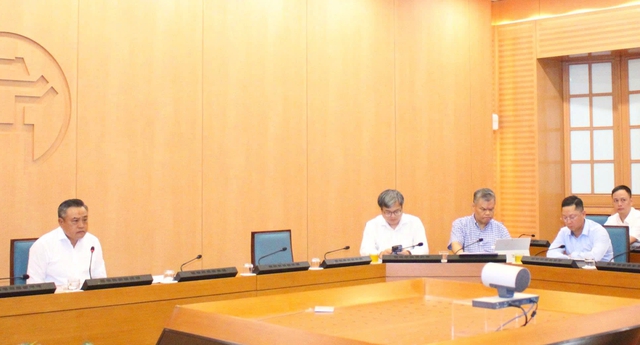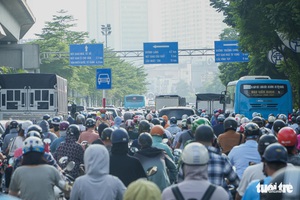
Hanoi sticks to 2030 motorcycle restriction plan in 4 inner-city districts: chairman
Hanoi’s chairman Tran Sy Thanh reaffirmed the city’s commitment to its plan to limit motorcycle use in four central districts by 2030, emphasizing the necessity of such measures for urban development.
Thanh told a meeting with the Vietnam Association of Motorcycle Manufacturers (VAMM) that the capital remains committed to transitioning from gasoline-powered motorbikes to electric alternatives in line with a 2017 resolution passed by the municipal legislature.
“This policy was issued seven years ago, so it should not come as a surprise to businesses or the public,” Thanh said.
“The city is determined to implement a roadmap for shifting away from fossil fuel vehicles to clean energy ones.”
As part of the transition, Hanoi is piloting low-emission zones (LEZs) in four inner-city districts—namely Hoan Kiem, Ba Dinh, Hai Ba Trung, and Dong Da.
The measures include banning diesel-powered heavy trucks, prioritizing Euro 4-compliant cars, and requiring motorbikes to meet Tier 2 emission standards.
The city aims for public transport to account for 45-50 percent of the trips in these areas and has introduced 100 electric or green-energy buses, according to VnExpress.
Thanh emphasized that the 2030 timeline for restricting gasoline-powered two-wheelers in inner-city areas and shifting them to electric ones remains unchanged.
To support the transition, the city plans to introduce policies to assist residents, invest in charging infrastructure, raise safety standards at charging stations, and expand public transport.
Hanoi targets a complete shift of its bus fleet to clean energy by 2030 and aims to complete 10 urban railway lines spanning over 400km by 2035.
Thanh tasked the Department of Construction with joining hands with relevant agencies to ensure a balanced transition that considers the interests of the government, businesses, and the public.
“Motorbike manufacturers have operated in Vietnam for decades,” he said.
“They should now support the city and help residents switch to greener transport, contributing to a cleaner and more civilized capital.”

Officials attend a meeting with the Vietnam Association of Motorcycle Manufacturers (VAMM) in Hanoi, June 9, 2025. Photo: D.H.
VAMM chairwoman Sayaka Arai acknowledged the importance of the electric transition but noted its wide-reaching impact, particularly as motorbikes remain the primary mode of transport for many Vietnamese.
The association proposed a feasible and phased roadmap starting in 2030.
It pledged to develop more environmentally friendly gasoline-powered models that meet Euro 4 standards, use biofuels, and improve emissions control for vehicles currently in use, in a bid to support Hanoi’s green development goals.
Arai pointed out that VAMM’s five members – Honda, Yamaha, SYM, Suzuki, and Piaggio – account for over 95 percent of the domestic motorbike market, with 2,000 dealerships, 200 parts suppliers, and hundreds of thousands of workers.
On the other hand, she said, infrastructure for electric vehicles remains underdeveloped.
Public transport made up just 18.5 percent of the trips in Hanoi in 2022, charging stations are still modest, and electric motorbike technology faces challenges such as limited range, long charging times, and high costs.
According to VnExpress, Hanoi currently has around 1.1 million cars, 6.9 million motorbikes, and an estimated 1.2 million vehicles from other provinces operating in the city regularly.
Bao Anh - Pham Tuan / Tuoi Tre News
Link nội dung: https://news.tuoitre.vn/hanoi-sticks-to-2030-motorcycle-restriction-plan-in-4-inner-city-districts-chairman-103250610105207552.htm

